It was one of the most dangerous aerospace experiments, by the United States Air Force. On 16th August 1960, Captain Joseph Kittinger got ready to rise to an altitude of more than 100,000 feet above the Earth —about three times the flying altitude of commercial planes. Kittinger, a test and fighter pilot, was going to take off, not in a rocket but in a fragile balloon, which would carry him up, in a boxlike gondola suspended beneath it. And then, with only his pressure suit and helmet for protection from the deadly space environment, he was going to jump to Earth. The objective was to test a multistage parachute system, from 100,000 feet above, that would provide a means of escape for pilots forced to eject at high altitudes. This experiment, third in a series, was part of Project Excelsior.
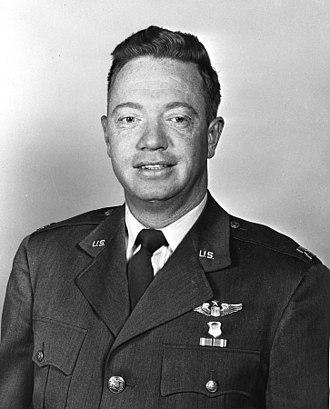
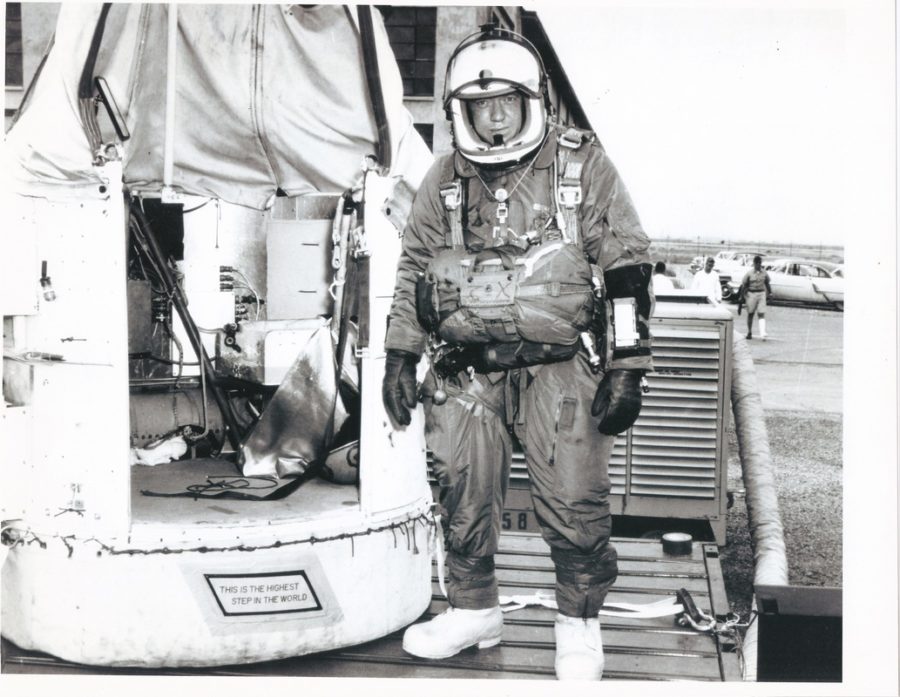
The designated boundary between Earth’s atmosphere and outer space is 100 kilometers (330,000 feet) above the Earth, called the Karman line. However, the atmosphere does not abruptly end but thins out with increasing altitude. For human beings, though, the “death zone” begins at 26,000 feet because the insufficient oxygen cannot sustain life for more than few minutes, which means health hazards beyond that altitude only get worse. At 63,000 feet, the air pressure is so little that your blood can boil, and blood vessels and organs can rupture. And when you rise to 100,000 feet, you are above 99 percent of the Earth’s atmosphere. There is virtually no air or oxygen. And though the temperature is 100 degrees below zero, the sun’s glare can burn you. So, except for the weightlessness in space, you are in a deadly space environment.
In 1960 these were some of the known perils of the stratosphere, and there were many unknowns, but that did not prevent Kittinger from taking the risk. The launch of Excelsior III was to take place in the New Mexico desert at 6 a.m. Kittinger and his crew woke up at 2 a.m. to start filling the helium balloon, which at sea level was about four stories (40 feet) wide and 20 stories high. At 4 a.m. Kittinger started breathing pure oxygen for two hours to remove all the nitrogen from the blood to avoid getting bends (decompression sickness) which occur with rapid changes in air pressure. He wore layers of warm clothing, gloves, and socks under his pressure suit, and his team kept him cool enough to make sure that he did not sweat—as any perspiration would turn into ice and freeze his clothes in the stratosphere. With his gear, Kittinger weighed 320 pounds. The team sealed his helmet and helped him climb into the gondola perched on the launch truck.
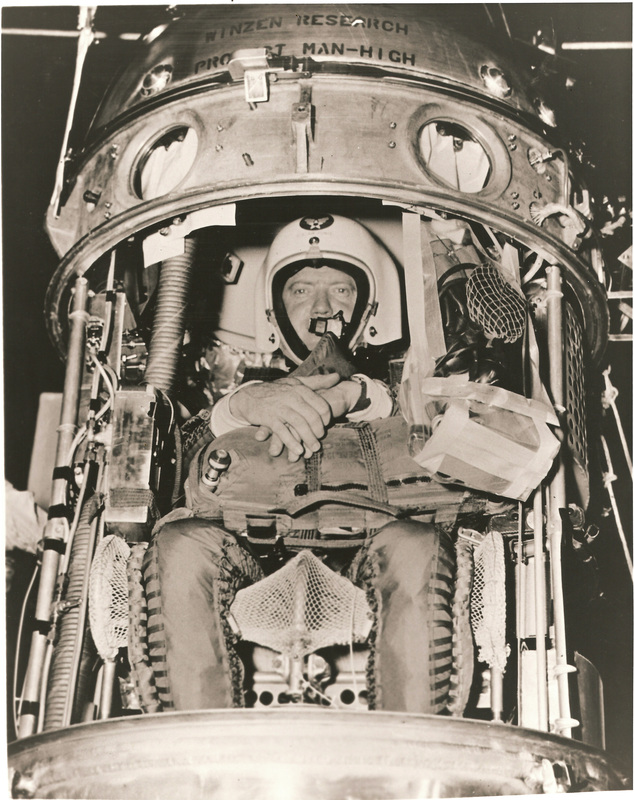
As the 200-foot-tall silvery balloon rose and floated higher, it expanded to 25 stories in width. At 40,000 feet, Kittinger’s pressure suit inflated, but his right pressure glove did not inflate. With the exposure to vacuum, his right hand began to swell. He decided to keep that painful revelation to himself rather than convey it to his crew, fearing that they would abort the flight. Having taken his calculated risk, the 32-year-old captain decided to stay calm and focused as it was important for the mission, and his respiration and pulse were being monitored.
For Project Excelsior, all three flights to the stratosphere involved jumping from extreme altitudes and his first dive from 76,000 feet from Excelsior I had nearly killed him. On that flight, just before the jump, Kittinger had to struggle his way out of the frozen seat and, in the process, he had accidentally triggered the timer of his stabilization chute, which deployed prematurely during the fall and wrapped around his neck. Research on dummies had shown that, without a stabilization chute, a falling body from an extreme altitude has a dreadful tendency to go into a flat spin up to 200 revolutions per minute. Now, Kittinger was falling and spinning at 120 rpm. Rendered unconscious, few minutes later, he found himself 3,000 feet above the Earth, coasting down under his reserve parachute.
Undaunted, by the catastrophic experience, he proceeded with Excelsior II, and everything went well with his jump from 75,000 feet.
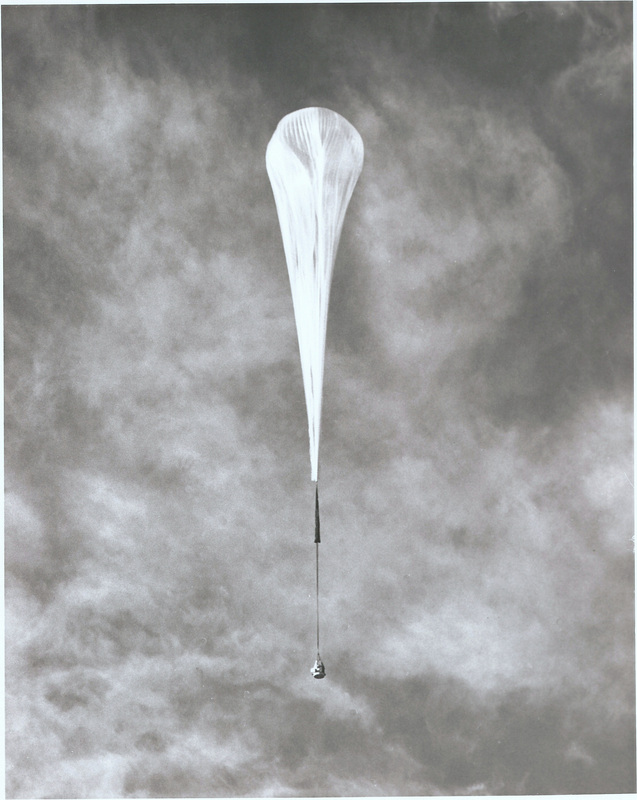
Now on Excelsior III, he was going to dive from 102,800 feet above the Earth, where there was no room for any error till he fell to a safer altitude. Even a small rip in his helmet or pressure suit would have been fatal. At that peak altitude, where only a handful of rocket plane pilots had arced momentarily, Kittinger had eleven long minutes before initiating the jump procedure. He took that opportunity to absorb the panorama of space in detail and described it to his ground crew who was eager to hear about it. He could see the curvature of the Earth set against the black backdrop of outer space and how the sky changed colors from a blue band along the horizon to dark blue to indigo to the blackest he had ever seen. While he felt blessed to look out at the magnificent expanse of the universe, he was also acutely aware of the hostile environment around him and the dangerous part of his mission ahead, and he just wanted to be back on the ground.

Kittinger was relieved when his ground crew asked him to go through the checklist for the jump. He unplugged all the monitoring systems connected to him and stood up outside the confines of the gondola becoming the first man to be in space outside of a spacecraft. Just before taking the leap, he informed his doctor that his right hand was twice its normal size and of no use. He wanted them to have the information for documentation. Then he said a silent prayer and jumped in the vacuum. Within seconds he had accelerated to 614 miles per hour. But he had no sense of speed, because there is no wind or sound, and nothing flashes by in the stratosphere.
As he fell to the troposphere below, his speed had decreased to 250 miles per hour due to the resistance of the air, and the pressure suit was beginning to relax. During the long leap, he kept commenting to tape his observations about the altitude, the parachute functions, the pressure suit, and his fall. Even at 30,000 feet, the sunshine felt harsh and bounced off the top of clouds, which were at 20,000 feet. Though this was his 33rd parachute jump and third one from extreme altitude—he was falling through thick, dark clouds for the first time.
The main canopy opened at 17,000 feet and when the ground came rushing up, he knew he would be home. “Lord, thank you for protecting me through that long fall,” he said. Kittinger made a rough landing due to the heavy instrument kit on his back – cutting the kit away required him to use his right hand, which was rendered useless during the experiment, but in a few days, it became normal.
At the time of his touchdown, Kittinger had set four records: Record altitude for manned balloon flight, record altitude for an open gondola, the highest parachute jump (102,800 feet) and the longest freefall (4 minutes 36 seconds). His record stood for 52 years and was broken, in October 2012, by expert parachutist Felix Baumgartner, whom Col. Kittinger (retired USAF) had assisted throughout the project. Baumgartner soared in a balloon to 128,100 feet above the Earth and jumped out. Two years later, Google executive Alan Eustace soared even higher and jumped from 135,890 feet.

But Kittinger’s space dive remains a phenomenal achievement even today as it was in 1960. At a time when it was not known what would happen to a human body in the vacuum of a near-space environment, Kittinger took catastrophic risks to test the MC-3 partial-pressure suit and new technologies in the stratosphere and improve safety in aviation. Kittinger’s jumps proved that, with proper protection, human beings can survive the hostile space environment, and for anyone ejecting at an extreme altitude, a stabilization chute can prevent the deadly flat spin while providing a quick descent to a safer atmospheric level.
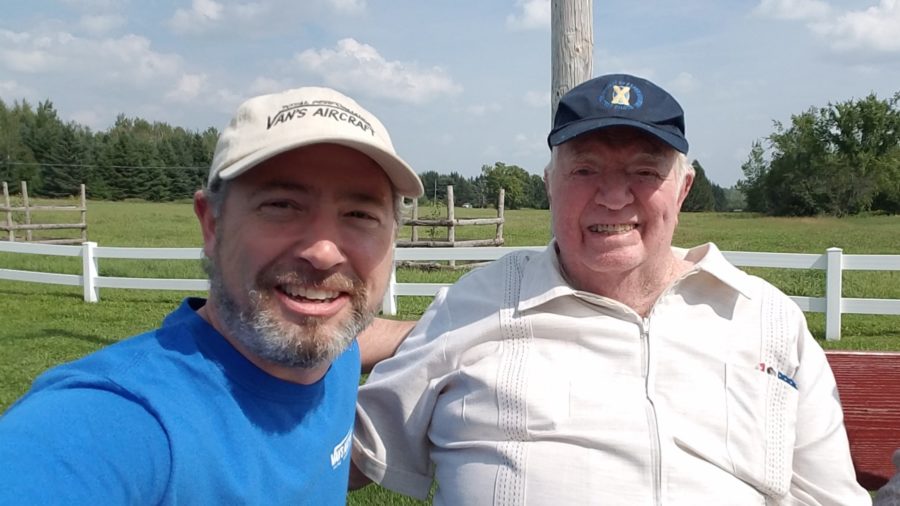
Even today, the multistage parachute system designed by Francis Beaupre of the Air Force’s Aerospace Medical Division is used in every ejection seat system. The knowledge gained from projects Manhigh and Excelsior, through ballooning as a scientific platform, would usher in the space age and contribute significantly to NASA’s Project Mercury—the first human spaceflight program of the United States.
Kittinger’s contributions, however, are not limited to his pioneering efforts in aerospace. As a fighter pilot, he went on to serve 483 combat missions during the Vietnam War and endured eleven months, as a prisoner of war, in a North Vietnamese prison. After Col. Kittinger retired from the Air Force in 1978, he pursued his passion for ballooning and became the first balloonist to fly solo across the Atlantic Ocean in 1984. In his autobiography, Come Up and Get Me (published in 2010), Kittinger narrates awe-inspiring and gripping stories about his flying adventures, often sprinkled with humor and amusing anecdotes, and salutes the brave efforts of people who contributed to the remarkable achievements.
By Sitara Maruf
***********
Top featured photo–An automatic camera captures Capt. (later Col.) Joseph Kittinger just as he jumps into the space vacuum from the Excelsior III gondola on August 16, 1960, at an altitude of 102,800 feet (31,300 m). (Photo courtesy of United States Air Force)







Leave a Reply